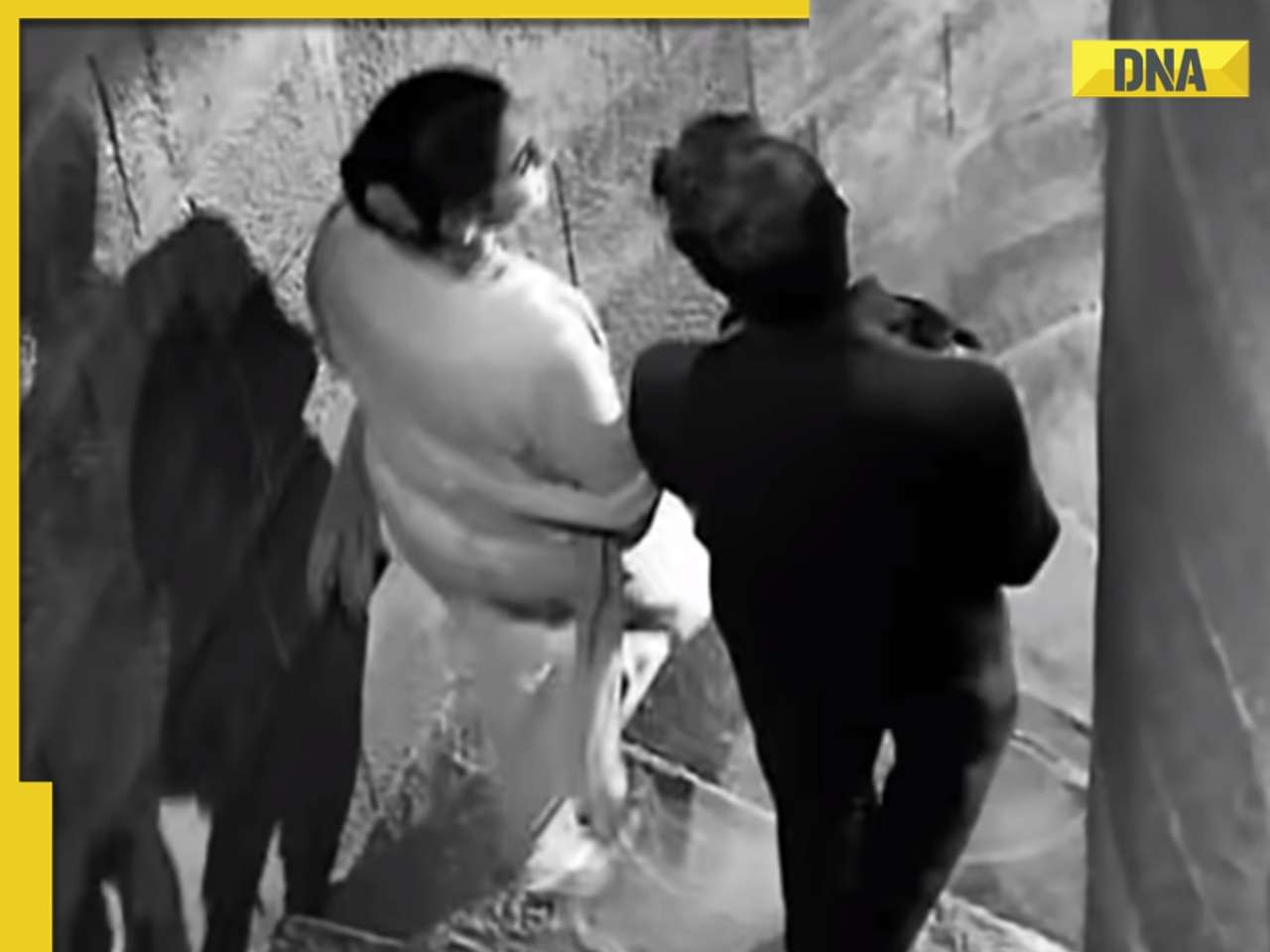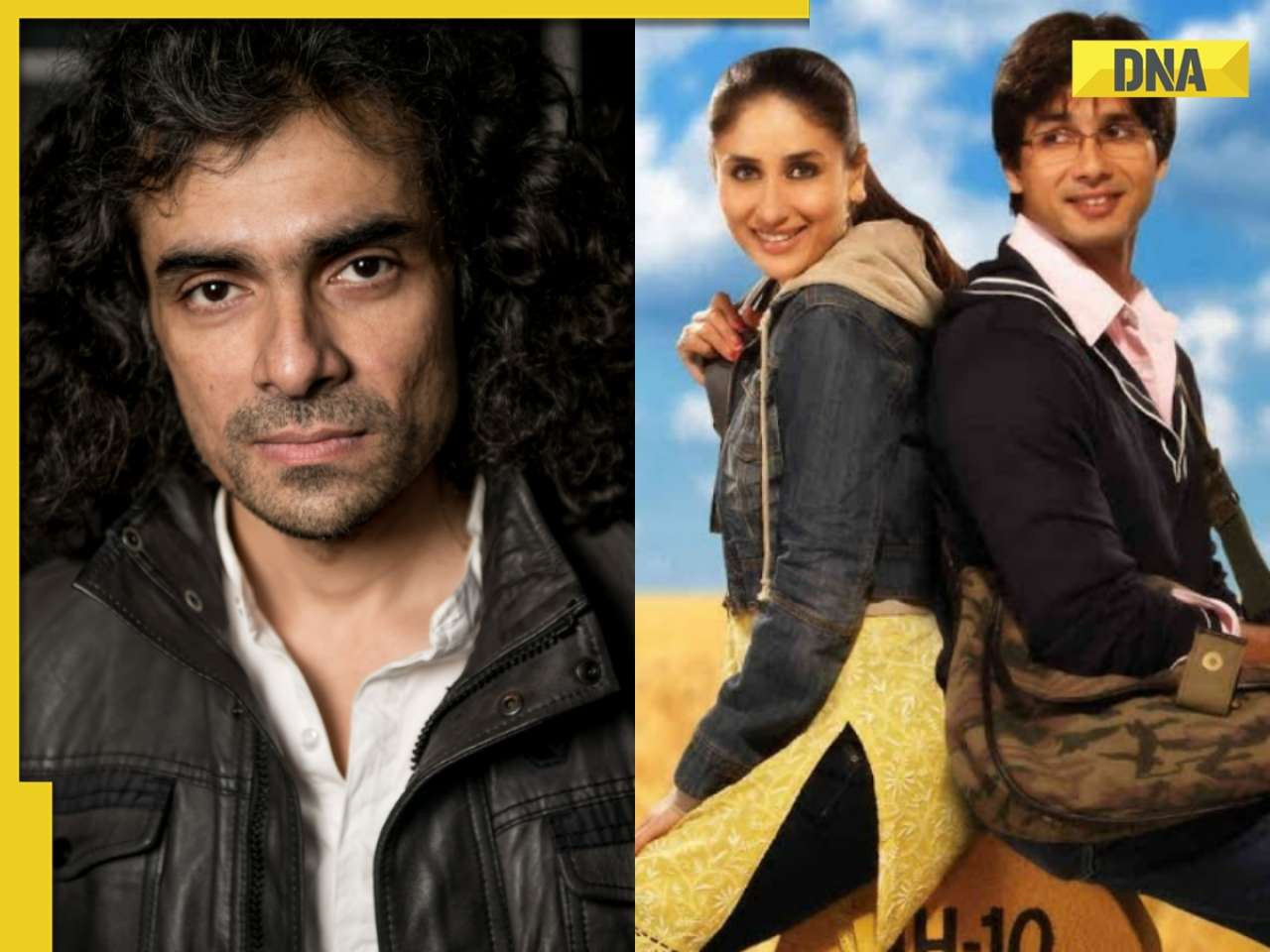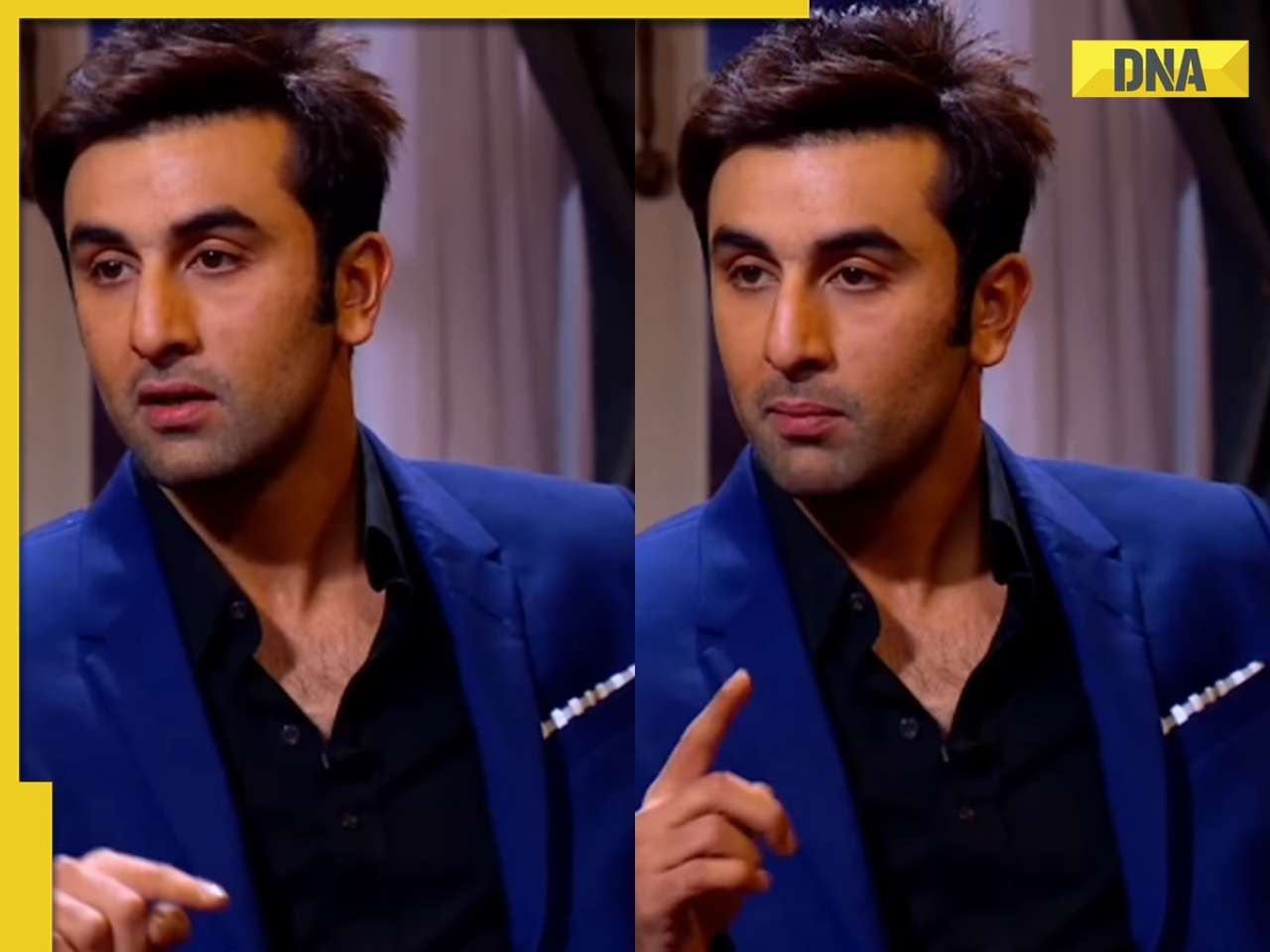Alvin Chung, a colour-blind patient, has turned to Chinese
medicine for a cure for his ‘incurable’ condition.
HONG KONG: Alvin Chung, 31, gingerly extends his right hand, and attempts to trace a dotted pattern on a colour chart being held out for him. “I think it’s a 6,” he says, and beams with pride when he’s told he’s right. But as he flips page after page, he begins to falter, as the patterns get more complex, and the colour distinctions less easy to discern. Particularly for someone with his condition.
Seven years ago, Chung, a telecom software engineer, was diagnosed with colour-blindness: the revelation came about in somewhat dramatic circumstances. “I had appeared for a job interview in a software company,” he recalls. “I sailed through the interview, but then in my fitness test the doctor said I was colour-blind. I very nearly didn’t get the job.”
In the Western medicine system, there is no known cure for colour-blindness, a condition in which the eye fails to perceive differences between some or all colours. Chung faces trouble in distinguishing between red and green, and a spot of bother with brown. And although he can make out traffic light colours clearly, he has difficulty in picking red and green colours against a chromatic background. This has proven to be a bit of an impediment at work, where he sometimes has to take help from his colleagues in identifying the colours of the wires and the LAN cables — and of blinking lights on the hardware.
“I consulted some Western medical practitioners in Hong Kong,” says Chung. “But they said my condition was probably hereditary, and that it was incurable.” Which is when he turned to Angela Wong, a licensed traditional Chinese medical practitioner in Hong Kong. Chung is only one of millions of people in China — and elsewhere in the world —who have in recent times begun to explore alternative cures offered by traditional Chinese medicine (TCM). At its simplest, TCM encapsulates a range of traditional medical practices that have evolved in China over thousands of years (see box: Yin-Yang balance). With its emphasis on holistic well-being and preventive good health practices, it borders on being a “way of life” and a spiritual philosophy, in much the same manner as the Ayurvedic medicine system and yoga.
“Traditional Chinese medicine is very widely practiced in China,” confirms Dr Zhixiu Lin, Assistant Professor in the School of Chinese Medicine at the Chinese University of Hong Kong. “There are probably 2,000 to 3,000 TCM hospitals in the mainland.” One factor that perhaps accounts for the resurgence in interest in TCM is that it is far less costly than Western medicine systems, where, for instance, diagnostic procedures alone can be hugely expensive.
Although Chinese traditional medical practitioners in China have claimed success in curing many diseases — including cancer, and even SARS — Lin acknowledges that medical evidence hasn’t always met the highest standards of scrutiny. Yet, he notes, there is an abundance of case studies, observations and anecdotal evidence to back many claims of cures under this system.
Wong, who is treating Chung for his colour-blindness, too acknowledges that even if her method succeeds on him, it would be only one case — not enough to validate her procedures. In the month or so since Chung’s treatment for his eye condition began, he’s made a measure of progress. “My sensitivity to colour is perhaps a little sharper,” says Chung.
What regimen does Wong follow on Chung? “In his case,” says Wong, “I’m trying to increase his yin energy to balance his yang. I’m also working to improve his digestion, and his liver and spleen functions.” Chung has also undergone about 10 acupuncture sessions; he also does eye exercises, follows a meditation routine, practices yoga, and abides by a strict diet regimen.
Wong is well-pleased with Chung’s progress, but refuses to speculate on when he can be completely cured of his colour-blindness.
“Right now, I’m only working to ensure that Chung feels more confident about his eye, and that he’ll never have to give up a job he loves and is good at.”
As Chung traces a panda pattern on his colour chart, he reckons that the hope that Wong offers is a good enough ‘miracle cure’ for him.
![submenu-img]() Three Indian nationals accused of killing Hardeep Singh Nijjar appear in Canadian court amid diplomatic crisis
Three Indian nationals accused of killing Hardeep Singh Nijjar appear in Canadian court amid diplomatic crisis![submenu-img]() Apple iPad Pro with M4 chip and AI capabilities launched in India, price starts at Rs 99900
Apple iPad Pro with M4 chip and AI capabilities launched in India, price starts at Rs 99900![submenu-img]() DNA Exclusive: Inside scoop of Congress' plan to defeat Smriti Irani, retain Amethi
DNA Exclusive: Inside scoop of Congress' plan to defeat Smriti Irani, retain Amethi![submenu-img]() This superstar was in love with Muslim actress, was about to marry her, relationship ruined after death threats from..
This superstar was in love with Muslim actress, was about to marry her, relationship ruined after death threats from..![submenu-img]() Covishield maker AstraZeneca to withdraw its COVID-19 vaccine globally due to...
Covishield maker AstraZeneca to withdraw its COVID-19 vaccine globally due to...![submenu-img]() DNA Verified: Is CAA an anti-Muslim law? Centre terms news report as 'misleading'
DNA Verified: Is CAA an anti-Muslim law? Centre terms news report as 'misleading'![submenu-img]() DNA Verified: Lok Sabha Elections 2024 to be held on April 19? Know truth behind viral message
DNA Verified: Lok Sabha Elections 2024 to be held on April 19? Know truth behind viral message![submenu-img]() DNA Verified: Modi govt giving students free laptops under 'One Student One Laptop' scheme? Know truth here
DNA Verified: Modi govt giving students free laptops under 'One Student One Laptop' scheme? Know truth here![submenu-img]() DNA Verified: Shah Rukh Khan denies reports of his role in release of India's naval officers from Qatar
DNA Verified: Shah Rukh Khan denies reports of his role in release of India's naval officers from Qatar![submenu-img]() DNA Verified: Is govt providing Rs 1.6 lakh benefit to girls under PM Ladli Laxmi Yojana? Know truth
DNA Verified: Is govt providing Rs 1.6 lakh benefit to girls under PM Ladli Laxmi Yojana? Know truth![submenu-img]() Alia Bhatt wears elegant saree made by 163 people over 1965 hours to Met Gala 2024, fans call her ‘princess Jasmine’
Alia Bhatt wears elegant saree made by 163 people over 1965 hours to Met Gala 2024, fans call her ‘princess Jasmine’![submenu-img]() Jr NTR-Lakshmi Pranathi's 13th wedding anniversary: Here's how strangers became soulmates
Jr NTR-Lakshmi Pranathi's 13th wedding anniversary: Here's how strangers became soulmates![submenu-img]() Streaming This Week: Heeramandi, Shaitaan, Manjummel Boys, latest OTT releases to binge-watch
Streaming This Week: Heeramandi, Shaitaan, Manjummel Boys, latest OTT releases to binge-watch![submenu-img]() Remember Ayesha Kapur? Michelle from Black, here's how actress, nutrition coach, entrepreneur looks after 19 years
Remember Ayesha Kapur? Michelle from Black, here's how actress, nutrition coach, entrepreneur looks after 19 years![submenu-img]() Remember Heyy Babyy's cute 'Angel' Juanna Sanghvi? 20 year-old looks unrecognisable now, fans say 'her comeback will...'
Remember Heyy Babyy's cute 'Angel' Juanna Sanghvi? 20 year-old looks unrecognisable now, fans say 'her comeback will...'![submenu-img]() Haryana Political Crisis: Will 3 independent MLAs support withdrawal impact the present Nayab Saini led-BJP government?
Haryana Political Crisis: Will 3 independent MLAs support withdrawal impact the present Nayab Saini led-BJP government?![submenu-img]() DNA Explainer: Why Harvey Weinstein's rape conviction was overturned, will beleaguered Hollywood mogul get out of jail?
DNA Explainer: Why Harvey Weinstein's rape conviction was overturned, will beleaguered Hollywood mogul get out of jail?![submenu-img]() What is inheritance tax?
What is inheritance tax?![submenu-img]() DNA Explainer: What is cloud seeding which is blamed for wreaking havoc in Dubai?
DNA Explainer: What is cloud seeding which is blamed for wreaking havoc in Dubai?![submenu-img]() DNA Explainer: What is Israel's Arrow-3 defence system used to intercept Iran's missile attack?
DNA Explainer: What is Israel's Arrow-3 defence system used to intercept Iran's missile attack?![submenu-img]() This superstar was in love with Muslim actress, was about to marry her, relationship ruined after death threats from..
This superstar was in love with Muslim actress, was about to marry her, relationship ruined after death threats from..![submenu-img]() Meet Madhuri Dixit’s lookalike, who worked with Akshay Kumar, Govinda, quit films at peak of career, is married to…
Meet Madhuri Dixit’s lookalike, who worked with Akshay Kumar, Govinda, quit films at peak of career, is married to… ![submenu-img]() Meet former beauty queen who competed with Aishwarya, made debut with a superstar, quit acting to become monk, is now..
Meet former beauty queen who competed with Aishwarya, made debut with a superstar, quit acting to become monk, is now..![submenu-img]() Imtiaz Ali reveals if Shahid Kapoor, Kareena Kapoor Khan's breakup affected Jab We Met: 'They were...'
Imtiaz Ali reveals if Shahid Kapoor, Kareena Kapoor Khan's breakup affected Jab We Met: 'They were...'![submenu-img]() Meet actor, who was once thrown out of set, beat up cops, then became popular villain; starred in Rs 1000-crore film
Meet actor, who was once thrown out of set, beat up cops, then became popular villain; starred in Rs 1000-crore film![submenu-img]() IPL 2024: Jake Fraser-McGurk, Abishek Porel power DC to 20-run win over RR
IPL 2024: Jake Fraser-McGurk, Abishek Porel power DC to 20-run win over RR![submenu-img]() SRH vs LSG, IPL 2024: Predicted playing XI, live streaming details, weather and pitch report
SRH vs LSG, IPL 2024: Predicted playing XI, live streaming details, weather and pitch report![submenu-img]() IPL 2024: Here’s why CSK star MS Dhoni batted at No.9 against PBKS
IPL 2024: Here’s why CSK star MS Dhoni batted at No.9 against PBKS![submenu-img]() SRH vs LSG IPL 2024 Dream11 prediction: Fantasy cricket tips for Sunrisers Hyderabad vs Lucknow Super Giants
SRH vs LSG IPL 2024 Dream11 prediction: Fantasy cricket tips for Sunrisers Hyderabad vs Lucknow Super Giants![submenu-img]() Watch: Kuldeep Yadav, Yuzvendra Chahal team up for hilarious RR meme, video goes viral
Watch: Kuldeep Yadav, Yuzvendra Chahal team up for hilarious RR meme, video goes viral![submenu-img]() Not Alia Bhatt or Isha Ambani but this Indian CEO made heads turn at Met Gala 2024, she is from...
Not Alia Bhatt or Isha Ambani but this Indian CEO made heads turn at Met Gala 2024, she is from...![submenu-img]() Man makes Lord Hanuman co-litigant in plea, Delhi High Court asks him to pay Rs 100000…
Man makes Lord Hanuman co-litigant in plea, Delhi High Court asks him to pay Rs 100000…![submenu-img]() Four big dangerous asteroids coming toward Earth, but the good news is…
Four big dangerous asteroids coming toward Earth, but the good news is…![submenu-img]() Isha Ambani's Met Gala 2024 saree gown was created in over 10,000 hours, see pics
Isha Ambani's Met Gala 2024 saree gown was created in over 10,000 hours, see pics![submenu-img]() Indian-origin man says Apple CEO Tim Cook pushed him...
Indian-origin man says Apple CEO Tim Cook pushed him...








































)









)
)
)
)
)
)